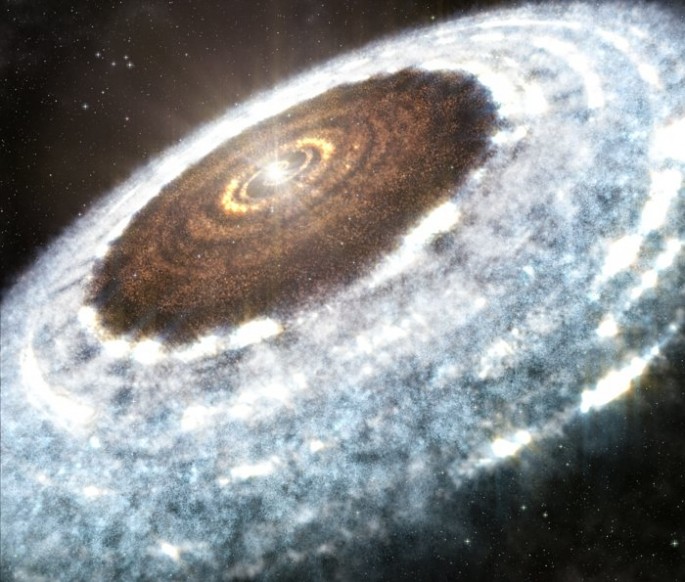For the first time ever, astronomers have observed a "snowline" around a star beyond our solar system, hinting at crucial clues about unique atmospheric conditions in alien worlds and even extraterrestrial life.
This galactic snow originally comes from a violent stellar emission from a young, hot star known as V883 Orionis, as the material from its accretion disc suddenly became flash heated and immediately sent this snowline, farther away from the star, making water particles cool enough to freeze.
Scientists at the ALMA (Atacama Large Millimeter/submillimeter Array) telescope in Chile observed this star and captured this new image, revealing this yellowish star possessing an orange disc and a darker snowline.
This star is located some 1,350 light years away from Earth which is also considered in its infancy stage, due to its still visible accretion disc of stellar material around the star.
According to co-author of the study, Zhaohuan Zhu of Princeton University, the distribution of water ice around this young star is very crucial to planet formation, including the possibility for life to develop, similar to Earth's.
Zhu explains that these observations obtained from ALMA can provide a better understanding of the evolution of protoplanetary discs and how young planets continue to form. This can be considered as direct evidence that this frosty region can be conducive to planet formation in other stellar formations.
Astronomers have long believed that the conditions found inside this snowline where water becomes vaporized is essential in forming rocky planets such as Earth and Mars. Meanwhile, outside this snowline, existing ice layers can help rapidly form snowballs and comets that can eventually evolve into massive gas planets such as Jupiter and Saturn.
Zhu concludes that since water ice is more prevalent than cosmic dust beyond this snowline, planets can collect more solid material and form faster and bigger from those conditions.
This new study is published in the journal Nature.



























